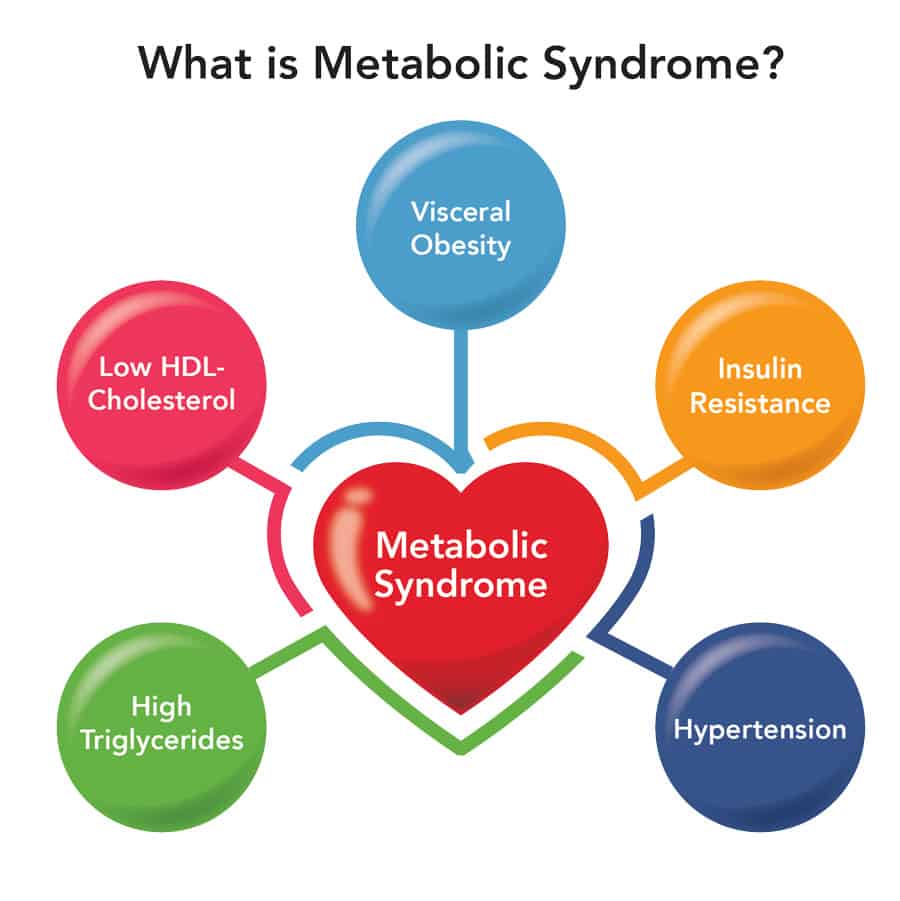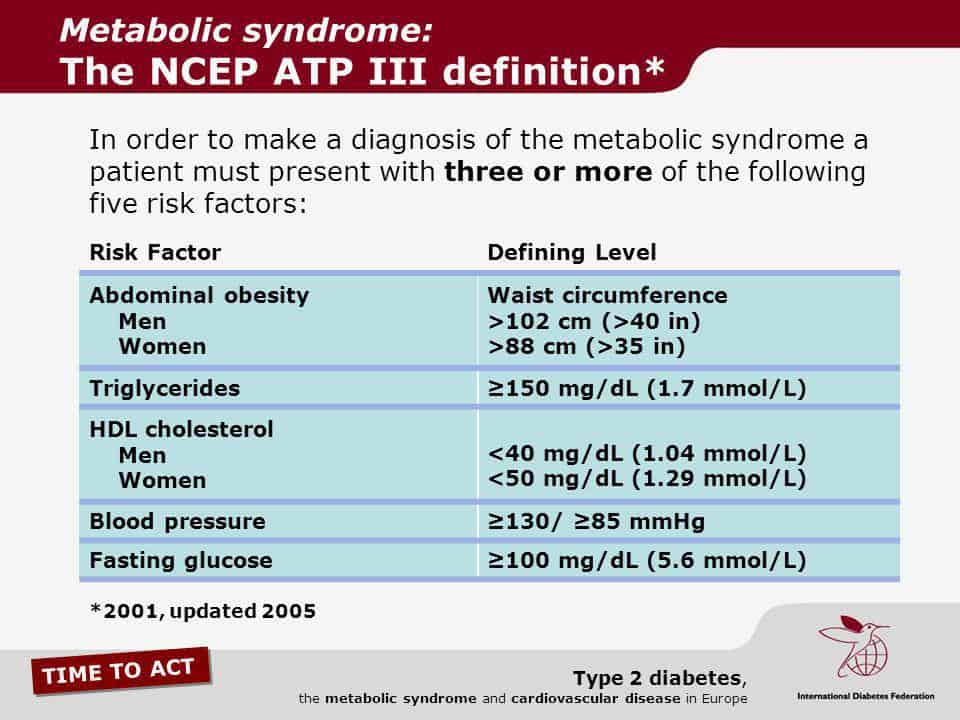
There is no question that our nation, and much of the world, struggles with many different chronic diseases. By definition, a chronic disease is one that lasts over a long period of time, many of which are never corrected and will last until death. These diseases are some of the leading causes of death in America, with heart disease being #1, followed by cancer and obesity-related diseases such as Type II diabetes. A common theme with these chronic diseases is that many, if not all, can be linked back to a condition called metabolic syndrome.
Metabolic syndrome is a cluster of conditions that, when occurring together, result in increased risk of chronic disease. These conditions are markers of physiology, and can occur without any symptoms for a long time. This makes it difficult for an individual to identify whether or not they actually have metabolic syndrome. The following graphic lays out how to identify metabolic syndrome, from the National Cholesterol Education Program:

Although metabolic syndrome is often closely related to overweight or obesity and inactivity, the graphic shows that that is not necessarily true. Another cause of metabolic syndrome is linked to insulin resistance. When we eat food, our digestive system normally breaks down many of these foods into glucose (sugar) to be used as energy by our cells. Insulin is a hormone released by the pancreas to move glucose from the bloodstream into each individual cell. If someone has insulin resistance, the cells don’t respond normally to this process, and the glucose is left in the bloodstream. This excess sugar in the blood stream is a main factor for increasing the other parameters of metabolic syndrome including triglycerides, cholesterol, and blood pressure.
The good news is that for the majority of individuals who have metabolic syndrome, the underlying causes come from their lifestyle. These are either things they are doing, such as consuming too much sugar, or not doing, such as getting enough exercise and physical activity. It is widely accepted that improving diet and exercise habits are the most effective ways to reduce and reverse the effects of metabolic syndrome. Adding other lifestyle factors such as optimizing nutrition with quality supplements, practicing mindfulness and meditation, and taking exceptional care of your body with chiropractic care and massage therapy will only help reverse metabolic syndrome if you have it, or prevent you from getting it in the first place.
Yours in Health, Dr. Alex
